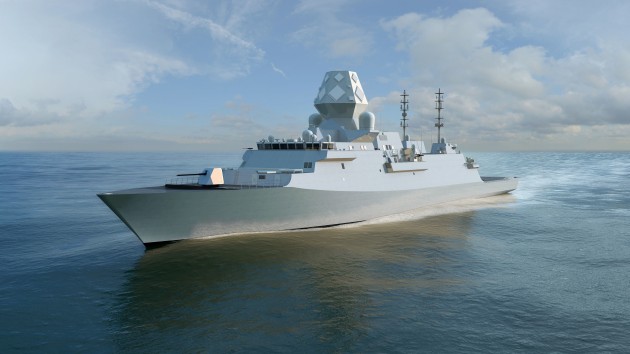Rolls-Royce has signed two contracts with BAE Systems to supply low-noise propellers and mission bay handling technology for the Royal Navy’s new Type 26 Global Combat Ship (GCS), the design variant of which is being proposed as an option for Australia’s Sea 5000 Future Frigate program (GCS-A).
One of the unique features of the GCS is the mission bay and Rolls-Royce president (Naval) Don Roussinos said its Handling System will enable efficient movement within the space of a wide variety of payloads including cargo, munitions, assorted crafts and containerised mission modules. It also features a launch and recovery system.
“The new Type 26 frigates will be globally deployable, multi-mission warships capable of undertaking a wide range of roles ... our pioneering mission bay handling system will ensure flexibility and adaptability throughout the life of the ships, whatever their future mission.”
Commenting on the company’s potential to be involved in the future Sea 5000 project, company general manager (Naval Marine ANZ) Rob Madders said: “Should the Global Combat Ship be selected by Australia, then I’m confident our technology would play a big part in future proofing the fleet so it can meet the ever-changing demands of a modern navy”.
Rolls-Royce is delivering the majority of the hybrid propulsion system for the Type 26 GCS. Power will come from a single MT30 gas turbine, providing direct drive through a gear box, and four MTU Series 4000 diesel generator sets from Rolls-Royce Power Systems. The company will also supply two fixed bolted propellers to each ship, designed to meet extremely challenging underwater-radiated noise requirements, suited to the ships’ key role of anti-submarine warfare.
In December 2017, the company committed to the BAE Systems Power & Propulsion Team, an initiative that will enable Rolls-Royce and other original equipment manufacturers to transfer technology and IP to Australian industry through the Sea 5000 program.
“We’re currently in advanced discussions with several Australian companies to develop a local industrial supply chain that can be mobilised quickly should the GCS-A be selected,” Madders said. “We have identified a shortlist of Australian companies for the local manufacture of Rolls-Royce products, and plan to announce our partners within weeks”.
Madders added these companies will collectively offer a range of capabilities that includes ship-to-ship refuelling at sea equipment, the mission bay handling system, propellers, steering gear and stabilisers and the complex steel enclosure which houses the MT30 gas turbine and its support auxiliaries.
“We are seeing an unprecedented demand for the MT30 gas turbine from leading naval forces around the world and believe the Australian industry will be well placed to take advantage of this allied nation commonality, by providing gas turbine packaging and integration to allied navies as part of our global supply chain,” Madders said. “We are also investigating providing other items of systems equipment into Sea 5000 which will have a high Australian manufacturing content.”





